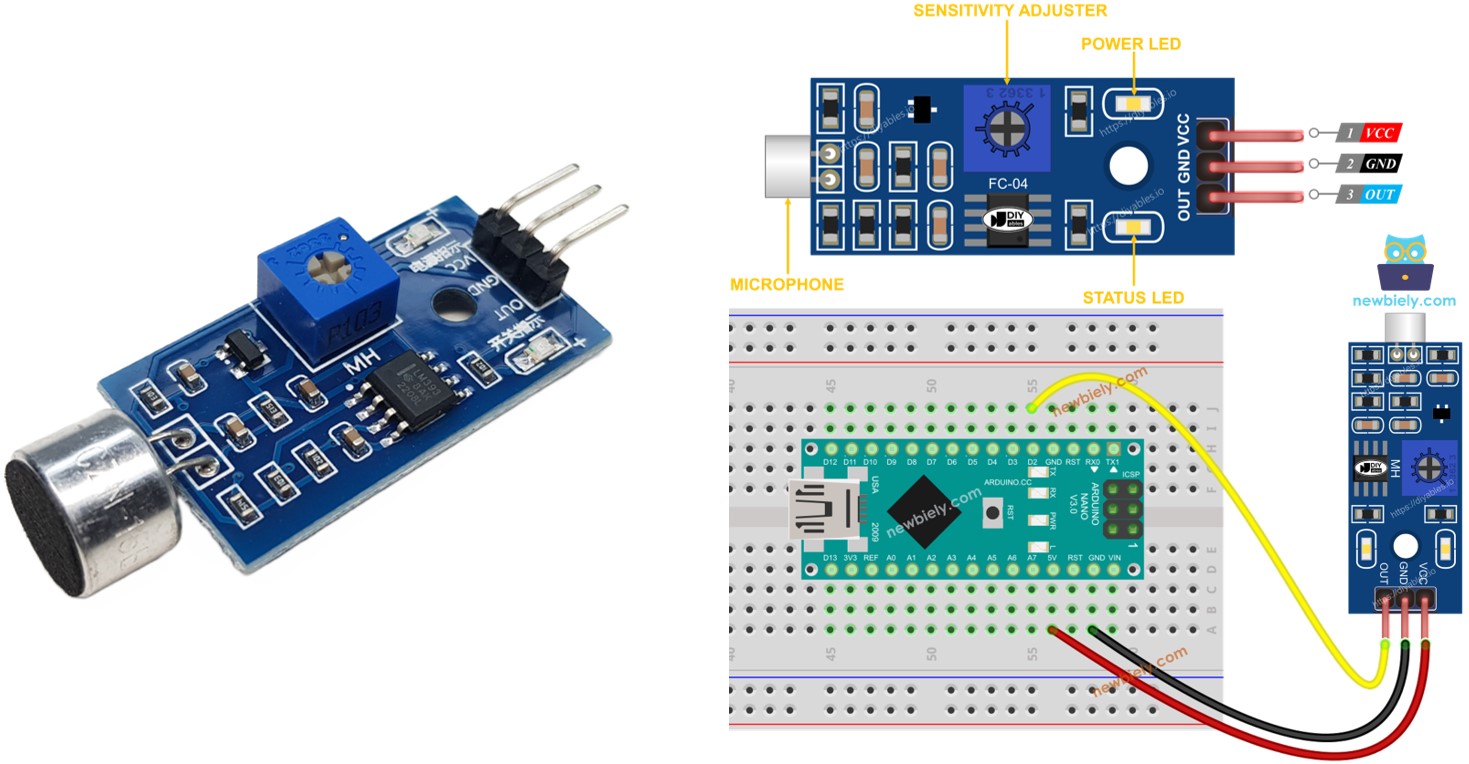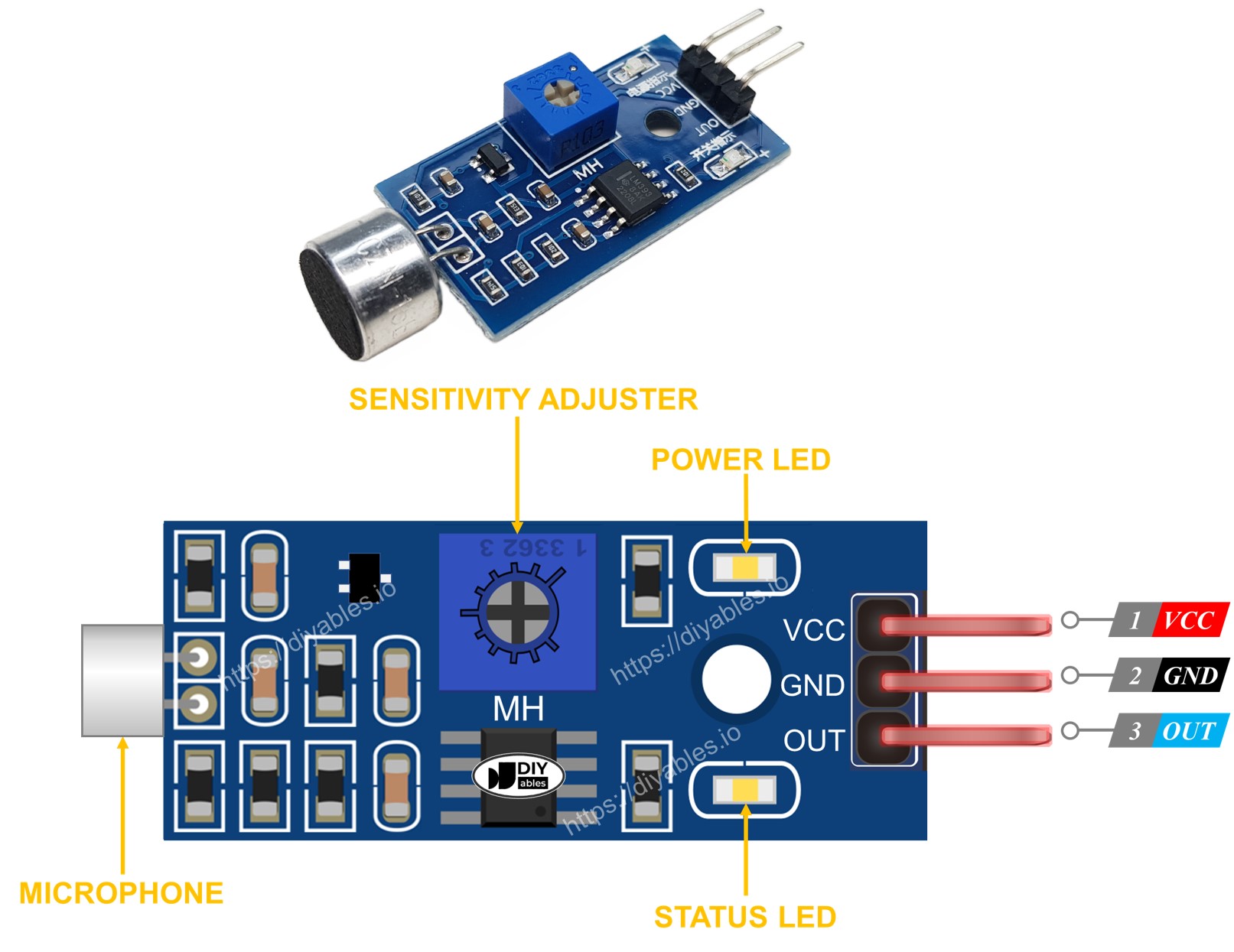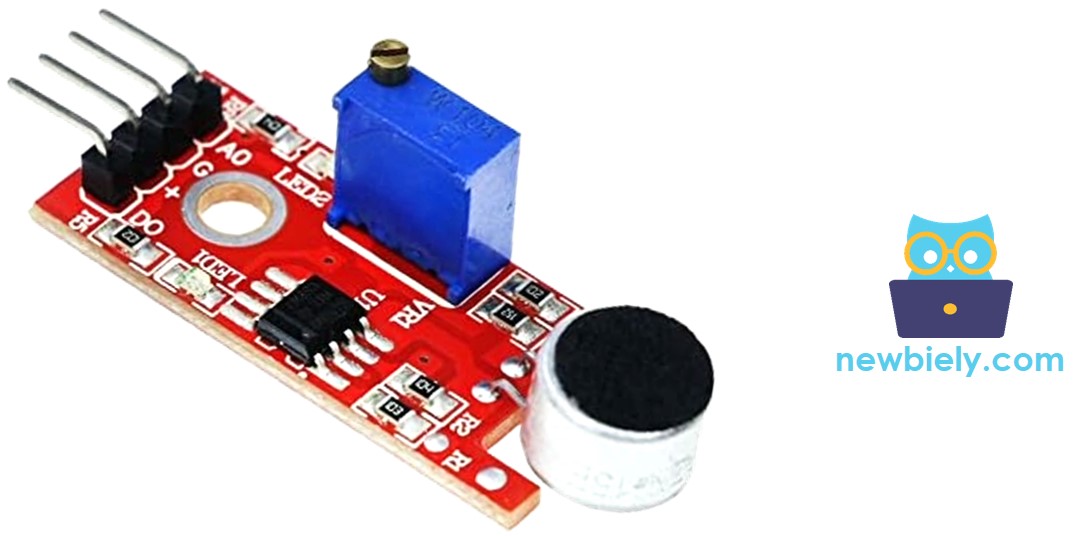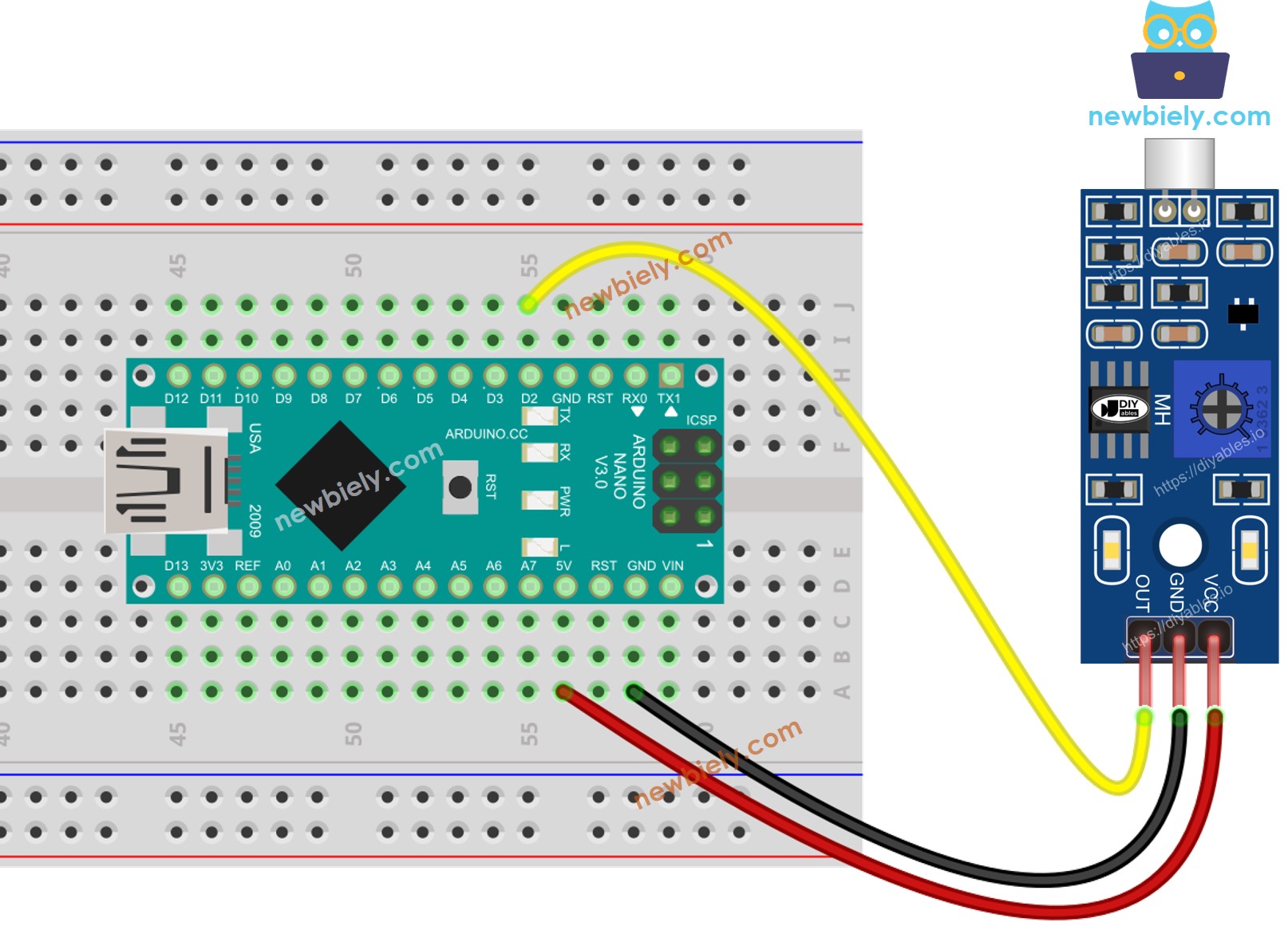Arduino Nano - Sound Sensor
The sound sensor has the capability to detect the presence of sound in its surroundings. It can be employed to create projects that respond to sound, like lights that activate with a clap or a pet feeder that responds to sound cues.
This tutorial instructs you how to use the Arduino Nano and a sound sensor to detect sound. We will explore:
- How to connect the sound sensor to the Arduino Nano
- How to program the Arduino Nano to detect sound using the sound sensor.

Subsequently, you have the flexibility to modify the code to trigger an LED or a light (through a relay) upon sound detection, or even enable the rotation of a servo motor.
Hardware Preparation
Or you can buy the following kits:
| 1 | × | DIYables Sensor Kit (30 sensors/displays) | |
| 1 | × | DIYables Sensor Kit (18 sensors/displays) |
Additionally, some of these links are for products from our own brand, DIYables .
Overview of Sound Sensor
The sound sensor can be used to detect sound in the surrounding environment. There are two types of sound sensor module:
- Digital sound sensor module: outputs the digital signal value (ON/OFF)
- Analog sound sensor module: outputs both analog and digital signal value
The sensitivity of digital output can be addjusted by using a built-in potentiometer.
The Digital Sound Sensor Pinout
The sound sensor includes three pins:
- VCC pin: needs to be connected to VCC (3.3V to 5V)
- GND pin: needs to be connected to GND (0V)
- OUT pin: is an output pin: HIGH if quiet and LOW if sound is detected. This pin needs to be connected to Arduino Nano's input pin.

The sound sensor has a handy built-in potentiometer that lets you easily adjust its sensitivity. Additionally, it features two LED indicators:
- One LED indicates the power status.
- The other LED indicates the sound state: it turns on when there is sound and off when it's quiet.
The Analog Sound Sensor Pinout
The analog sound sensor includes four pins:
- + pin: needs to be connected to 5V
- G pin: needs to be connected to GND (0V)
- DO pin: is a digital output pin: HIGH if quiet and LOW if sound is detected. This pin needs to be connected to Arduino Nano's digital input pin.
- AO pin: is an analog output pin: outputs the analog value indicated sound level. This pin needs to be connected to Arduino Nano's analog input pin.

How It Works
The sound sensor module includes a convenient built-in potentiometer that allows you to adjust the sound sensitivity. Here's how the output pin of the sensor behaves:
- When sound is detected, the output pin is set to LOW.
- When sound is not detected, the output pin is set to HIGH.
Wiring Diagram

This image is created using Fritzing. Click to enlarge image
See The best way to supply power to the Arduino Nano and other components.
How To Program For Sound Sensor
- Initializes the Arduino Nano pin to the digital input mode by using pinMode() function. For example, pin D2
- Reads the state of the Arduino Nano pin by using digitalRead() function.
Arduino Nano Code - Detecting the sound
Detailed Instructions
- Copy the above code and open with Arduino IDE
- Click Upload button on Arduino IDE to upload code to Arduino Nano
- Clap your hand in front of the sound sensor
- Check out the result on the Serial Monitor.
Please take note that if you notice the LED constantly staying on or off even when there is sound present, you can make adjustments to the potentiometer in order to fine-tune the sound sensitivity of the sensor.
Now we have the flexibility to personalize the code and make it trigger an LED or a light when sound is detected. We can even make a servo motor rotate. For more detailed information and step-by-step instructions, please refer to the tutorials provided at the end of this guide.
Troubleshooting
If you encounter issues with the sound sensor not functioning properly, you can follow these steps for troubleshooting:
- Reduce vibrations: The sound sensor is sensitive to mechanical vibrations and wind noise. To minimize these disturbances, try mounting the sound sensor on a stable surface.
- Consider the sensing range: Keep in mind that this sound sensor has a limited sensing range of approximately 10 inches. For accurate readings, make sure the sound source is closer to the sensor.
- Check the power supply: Ensure that the power supply is clean and free from noise. The sound sensor, being an analog circuit, is sensitive to power supply disturbances.
By following these steps, you can address common issues and improve the performance of the sound sensor.
